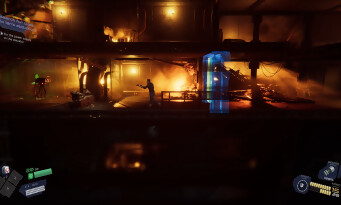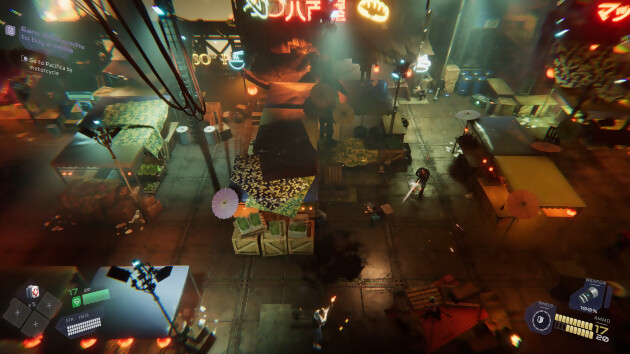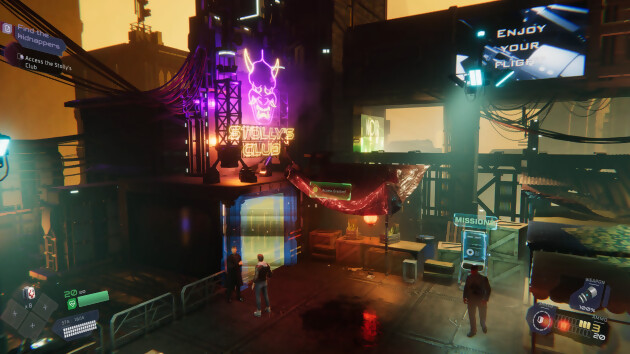A cult game released in 1992, Flashback is the work of a – small – team of course, but above all the vision of one man: Paul Cuisset. Former vice-president of Delphine Software, he is also the founder of the VectorCell studio which unfortunately did not last long (the company filed for bankruptcy in 2013, only eight years after its creation). It must be said that apart from the first Flashback, a certain Shaq Fu (more for the nostalgic cult side than the intrinsic quality of the title) and Moto Racer, Paul Cuisset has never managed to repeat the flamboyant success of his science- fiction. However, the man’s attempts have been numerous: Darkstone, Amy, Subject 13 and even the Flashback HD remake, none of these titles has succeeded in convincing the public. This is why the release of Flashback 2 is important in more ways than one, both for its creator and for the public now. boomer old, and who would like to relive good old 90’s sensations. During the Microids Days organized by the French publisher in its Parisian premises, we were able to approach the game, but also exchange with Paul Cuisset (a real big interview will arrive later in the year) to have some additional information, and sometimes surprising.
TEMPORAL PARADOX
First surprise: we learn that the story of this Flashback 2 takes place at the same time as the first Flashback of the name. It is indeed Conrad that we play, but the events of this sequel take place more or less at the same time, in another place in New Washington. Explanations that leave you perplexed, but with this fashion for the Multiverse that has hit pop culture in recent years, one would almost be tempted to say that Paul Cuisset has also given in to the sirens of parallel worlds, and for a sci-fi game like Flashback, appealing to these temporal paradoxes is not so ridiculous as that. We do not really know how Cuisset will fall back on his feet, but clearly, the French game designer wants to ignore the events of Fade to Black, considered until then to be the official continuation of the adventures of Conrad. Paul Cuisset in no way rejects what was done with this title, published at the time by Ubisoft, but it would seem that the game designer nevertheless wishes to rectify certain things. Starting with its game design, and it’s probably for this reason that this Flashback 2 uses the horizontal scrolling of the first episode, but with a contemporary technique. The choice of 3D was therefore fairly quickly imposed. Undoubtedly for ease of development on the one hand, but also because today’s public does not have the same esteem for 2D as players in their forties and over. However, it is indeed this audience that is the target to promote and see a Flashback 2 with the visual rendering of a The Last Night or a Replaced with this pixel-art DA of the most beautiful effect would have allowed the title of Paul Cuisset to raise its hypometer to the maximum. We are well aware that the financial means are not the same, but having artistic ambition would have made it possible to pick up with the ardor that was the first Flashback when it was released in 1992, a pioneer in the field.
This in no way means that Paul Cuisset’s proposal is to be rejected, far from it, especially since Flashack 2 displays a rather attractive aesthetic, with pretty light effects and a nice atmosphere, especially when you get to the level of the market. There is a cyberpunk side to the Blade Runner that emerges from it and all that is missing is the pouring rain to believe you are in Ridley Scott’s film. Yes, we are extrapolating a bit. Very quickly, by playing this Flashback 2, we understand that the horizontal scrolling is only valid in certain portions of the game, in particular the first corridors, which are very industrial. But quickly, we understand that Conrad can move on several planes and not just one as before. The game relies on a depth effect that must now be taken into account. The beginnings of the game are also quite confusing, not to say destabilizing, forcing the player to find his position in space. It will not be uncommon to find yourself stuck, for example, because you will not have understood that an object is blocking your way, precisely because of this depth effect. It’s a bias and a habit to be grasped, just like the character’s inertia which somewhat resembles that of Conrad in 1992, except that the perspectives have changed. This also goes hand in hand with the platforming sequences, numerous at the start and which will undoubtedly be repeated over the course of the adventure. Here again, the timing of the jumps and the ledges to be grabbed requires time to adapt. In fact, it’s the hitboxes linked to the interactive elements that lack amplitude, because if Conrad isn’t placed in the – small – zone that triggers the interaction, then nothing will happen. We would like to believe that this is a trick to take and not a flaw in game design, but if the game behaves like this throughout the adventure, chances are that many players will capitulate before the credits.
Anyway, Flashback 2 reveals its objectives fairly quickly, and its change of perspective. 2023 obliges, and unlike the first episode, the game will not be in partitioned spaces, for our great happiness, and the camera will even be allowed to rotate to offer sequences in near view top-down. This is the case in the market sequence, where the game needs more amplitude to allow Conrad to move better. It is also during these moments in more aerial view that we better understand the new vision of the combat system. Conrad has gained mobility and he can now rotate 360 degrees. To do this, Paul Cuisset and his teams have opted for a steering system via the right analog stick, in order to rotate the character in all possible directions, while the right trigger allows you to fire simultaneously. Again, it’s confusing, and it will clearly take time to adapt to master the whole thing. In addition to the gun he can draw, Conrad can now trigger a shield to protect himself, knowing that the latter is temporary, in order to limit abuse and force the player to master dodging via rolls. Another novelty of Flashback 2 is the possibility for Conrad to carry out a melee attack, useful for getting out of enemies that are too close and that a shot would not get rid of; especially since the enemies in the game do not make a gift. Did you think that over time the difficulty would decrease? For Paul Cuisset, Flashback 2 must remain faithful to the spirit of the first episode and the side “die & retry” is clearly part of it. No doubt for this reason that the use of care kits is so restrictive… You will have to be prepared to suffer, especially since Flashback 2 will not offer any level of customizable difficulty. Maybe because Souls-like have become more and more mainstream…



